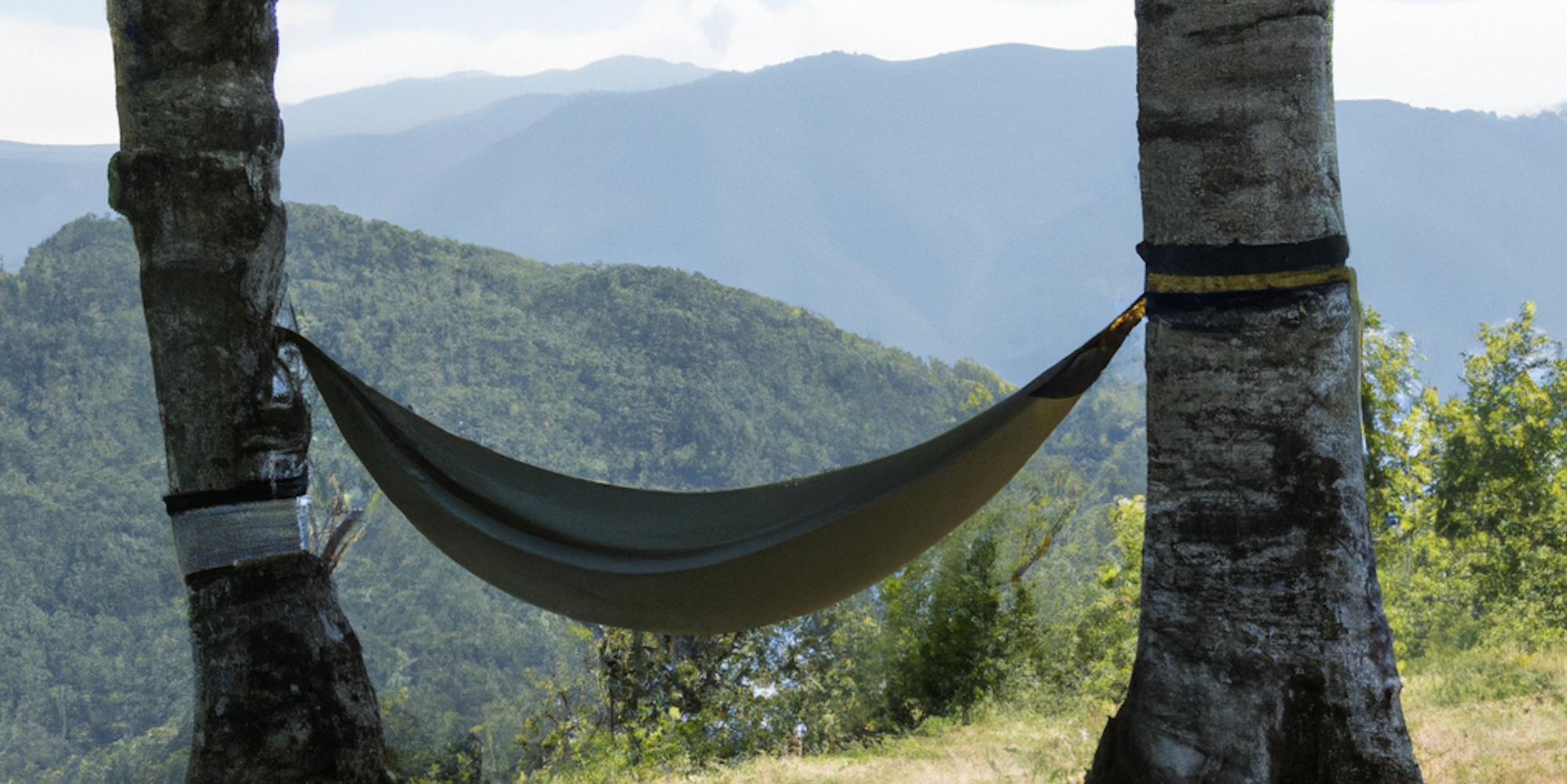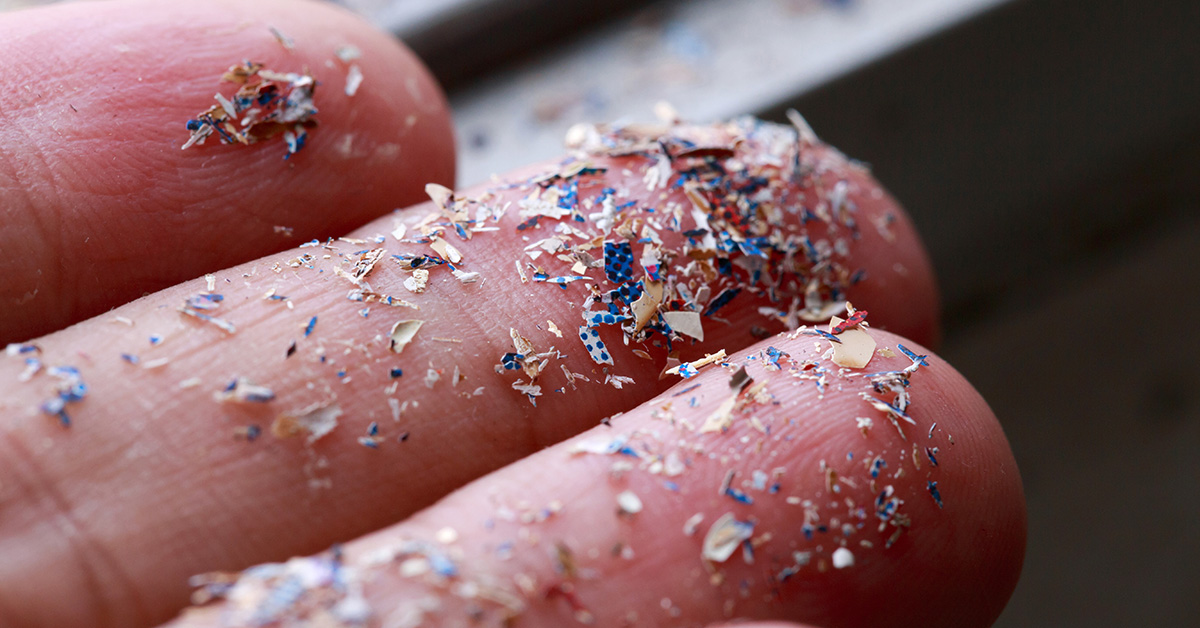Table of Contents
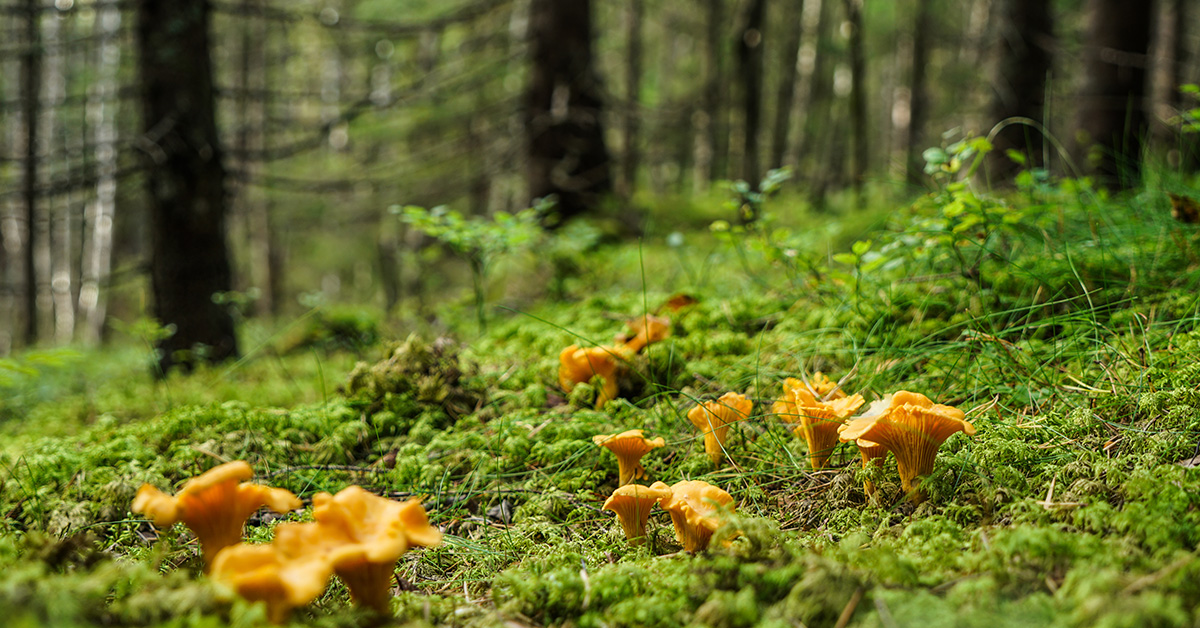
Spring Mushrooms In The Appalachian Mountains
Spring is a joyous time of the year. Forests and the many critters they foster are just waking up from the cold and dark slumber of winter. Spring brings the familiar feeling feeling of warm sunshine, wildflowers, and freedom from the imberable climate.
In the Appalachian mountains spring is one of the most beautiful time of the year. Even a mushroom lover like myself whom has a biological bias towards fungi, can’t help but be amazed by the displays of wildflowers. Luckily though, if you know what your doing there are also fungi to look for!
While it’s true that spring mushroom season in the Appalachians does not typically rival that of Summer and Fall season there is no reason to ignore it. Spring is a beautiful time to start hiking, enjoy the wildflowers, scout spots, and find some of the first mushrooms of the year!
Below I’m going to mention some of the mushrooms you can find in the Appalachians during spring season. These are the dates ranging roughly from mid-march to mid-june. The end of the spring season generally overlaps with the bountiful summer season.
What Mushrooms Grow In Spring In The Appalachian Mountains?
- Hemlock Varnish Shelf (Ganoderma tsugae)
- Dryad’s Saddle (Cerioporus squamosus)
- Turkey-Tail (Trametes versicolor)
- Chicken of the Woods(Laetiporus sulphureus)
- Deer Mushroom (Pluteus cervinus)
- Splitgill Mushroom (Schizophyllum commune)
- White Morel (Morchella americana)
- Red Chanterelle (Cantharellus cinnabarinus)
- Oyster Mushroom (Pleurotus ostreatus)
- Jackson’s Slender Caesar (Amanita jacksonii)
- Summer Oyster Mushroom (Pleurotus pulmonarius)
- Wine-cap Stropharia (Stropharia rugosoannulata)
- Smooth Chanterelle (Cantharellus lateritius)
- Black Morel (Morchella angusticeps)
- Eastern Black Trumpets (Craterellus fallax)
In the Appalachian Mountains
Spring Mushroom Season: Is mostly dominated by saprophytic or decomposer fungi. This includes a variety of polypores, oyster mushrooms, and other saprobes whom opportunistically make the best of appropriate conditions. Morels are one of the unique and most delicious mushrooms that can also be found in the spring.
For practicality sakes I’ve divided the spring season into 2 sections. Early Spring (Mid March To May) Mushrooms and Late Spring Mushrooms (May to mid June). Late spring season typically overlaps with the beginning of summer season when many of the most coveted mushrooms begin fruiting!
Summer/Fall Mushroom Season: Most sought after mushrooms during this time of year are mycorrhizal fungi. This means mushroom producing fungi that form symbiosis with the roots of trees. These include are mushrooms such as Chanterelles, Amanitas, Boletes, and many of the most sought after edibles. While you may find some in the spring, these are usually scarce and occur later in spring when they overlap with summer season.
Early Spring Mushrooms (Mid March - May)
Morels (Morchella sp.)
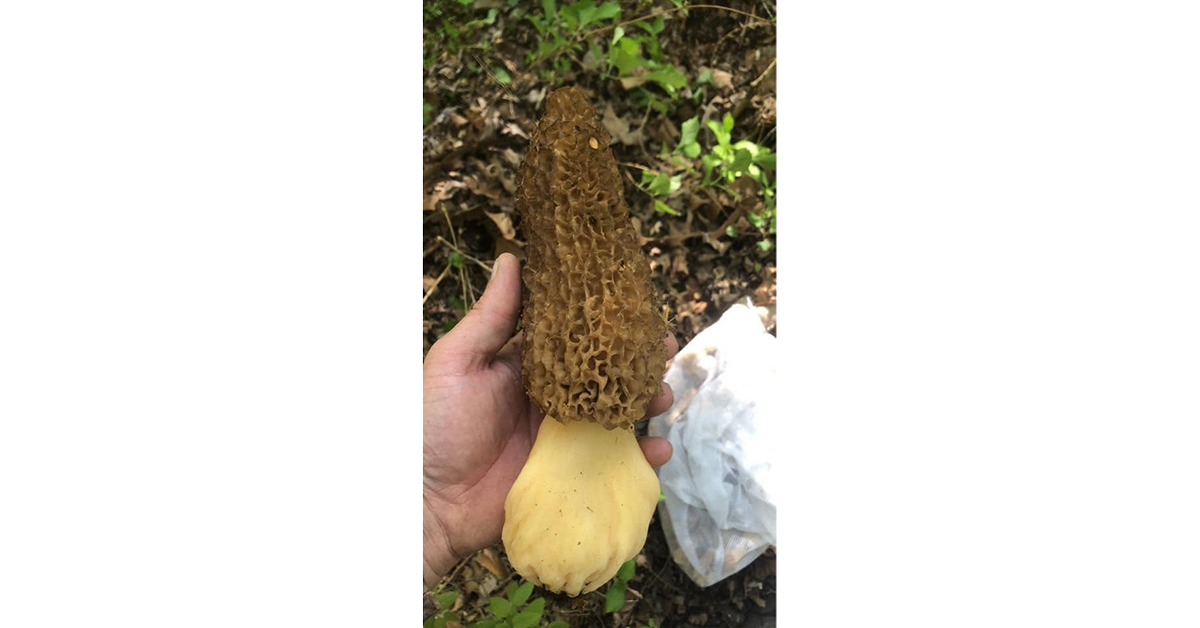
The Appalachian Mountains aren’t necessarily considered hot-spots for morels compared to the western United States. Even still, there are about 10 species that have been reported in the Appalachian Mountains. Most of these are known to occur in the spring season, although they are still considered relatively rare.
Unlike in the west, morels in the east DO NOT associate with wildfires. They usually occur near hardwood trees, often times sick or dying trees such as Elm.
The taxonomy behind morels can be a bit tricky because a single species can be “polymorphic”. This means that one species can have many different forms and appear as though it were multiple species! While figuring out the exact species can be difficult, figuring out that you have a morel (member of the genus Morchella) is EASY and they are all edible!
What Do Morels Look Like?
Morels are recognized by their ruffled cone-like cap that is distinctive of the genus. It is an irregular mushroom and not your basic stem-and-cap. The best way to learn what a morel looks like is to see a picture! Morels also have a distinctive, earthy, dark chocolate smell. Some also describe the smell as “spermatic”.
Morel Lookalikes
Members of the genus Helvella and Gyromitra
Below is a list of the Morels known to occur in the early spring in the Appalachian Mountains. It is organized from most common to least.
Spring Morels In The Applachians
| Common Name | Scientific Name | Description and Habitat |
| White Morel | (Morchella americana) | These usually fruit around mid-April but can start as early as March. Grows with Ash, Elm, Aspen, Poplars, Sycamores, and Tulips. Has been reported growing with White Pine. |
| Yellow Morel | (Morchella esculenta) | Most often fruits from April to May. Associates with pine, elm, tulip, sassafras, beech, ash, sycamore, and hickory. In particular has been reported with dieing elms. |
| Black Morel | (Morchella angusticeps) | Usually associated with Ash and Tulip Poplar. Most abundant from March to May. They grow solitary, scattered, or in large patches. |
| Eastern Yellow Morel | (Morchella diminutiva) | Most often associates with white ash, green ash, hickory, tulips, and other hardwoods. |
| Half-free Morel | (Morchella punctipes) | Grows with hardwood forests and may be completely absent in some years. |
Hemlock Reishi (Ganoderma tsugae)
Hemlock Reishi is a prized medicinal mushroom that can be found early in the spring. As the name suggests it primarily grows on dead and fallen Hemlock trees. It is one of the first mushrooms you can find in the spring and thus can keep you busy while you wait for the season to progress!
What Does Hemlock Reishi Look Like?
Hemlock Reishi resembles the highly regarded Reishi (Ganoderma lucidum) that is valued in eastern medicine. It produces a large flat-shaped fruiting body on the sides of large tree trunks or stumps. The bottom is usually completely white and the top is usually a shiny red or brown color. This is why it is often called a “Varnished Conk”. The fruiting body is short lived unlike the perennial fruiting bodies of the Artist Conk (Ganoderma applanatum) and it’s relatives.
Hemlock Reishi Lookalikes
- Artist Conk (Ganoderma applanatum)
- Reishi (Ganoderma lucidium)
- other Ganoderma species.
Remarks
This can be consumed in decoctions or extractions. For decoction it is best to dry, grind, and boil the mushroom for several hours. Double extractions with alcohol are often recommended.
Chicken Of The Woods (Laetiporus sulphureus)
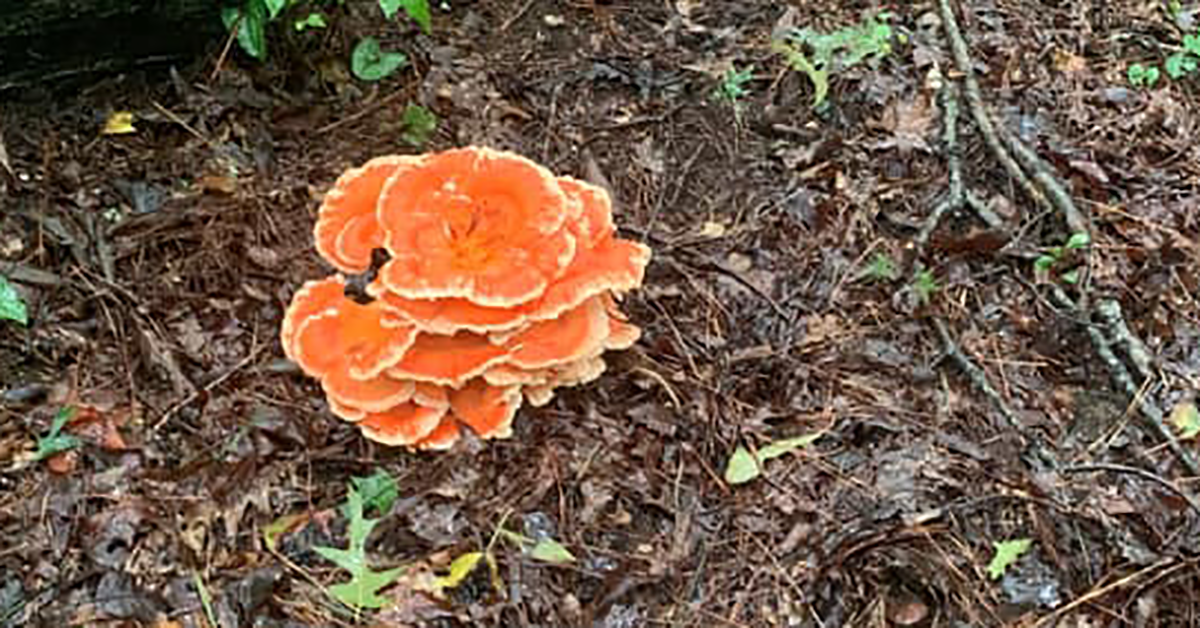
Chicken Of The Woods is one of the first edible mushrooms of the season. As soon as temperatures rise, Chicken Of The Woods is liable to fruit! They most often are found growing on both dead or living hardwood trees such as Oak. Just like the Hemlock Reishi, this is a good mushroom to keep you busy until the season becomes more diverse with fungi.
What Does Chicken Of The Woods Look Like?
Chicken of The Woods is a yellow bracket fungi that grows on the sides of stumps, snags, fallen trees, and on living trees. It forms several brackets that are usually orange on top and bright yellow underneath. The fresh growth on the margins is also usually yellow. It can be found by scanning the forest for these distinctive bright colors! The smell is often compared to butter popcorn while others compare it to urine.
Chicken of the Woods Lookalikes
Chicken Of The Woods is very distinctive and does not have many lookalikes.
Other Remarks
Many folks have digestive issues with this mushroom. I recommend only harvesting the tender young growth and leaving any hard, woody, and mature parts of the fungi. You can do this by just slicing off the other 2-3” and leaving the rest on the trunk. If you have a weak stomach only eat a little your first time around.
Wine-cap Stropharia (Stropharia rugosoannulata)
The Wine Cap Stropharia is a soil-dwelling decomposer fungi that can occur year-round when ever the climate is suitable. This includes early spring in some cases but will also occur in summer and fall. It is also commonly known as the Garden Giant Mushroom because of its size and ability to be cultivated outdoors in gardens.
What Does Wine-Cap Stropharia Look Like?
As the name suggest, the cap of this mushroom is a distinctive purple wine-like color. It’s habitat is also indicative as it grows directly from soil and not from rotting logs or stumps. When young the mushroom gills are covered by a “partial veil”. This a thin white tissue that protects the young gills during maturation. The gills are usually dark and stained by the black spores. The stem is white to yellow.
Does Wine Cap mushroom have Lookalikes?
Agaricus species can resemble the Wine Cap Stropharia but are differentiated by the young pink gills.
Oyster Mushrooms (Pleurotus sp.)
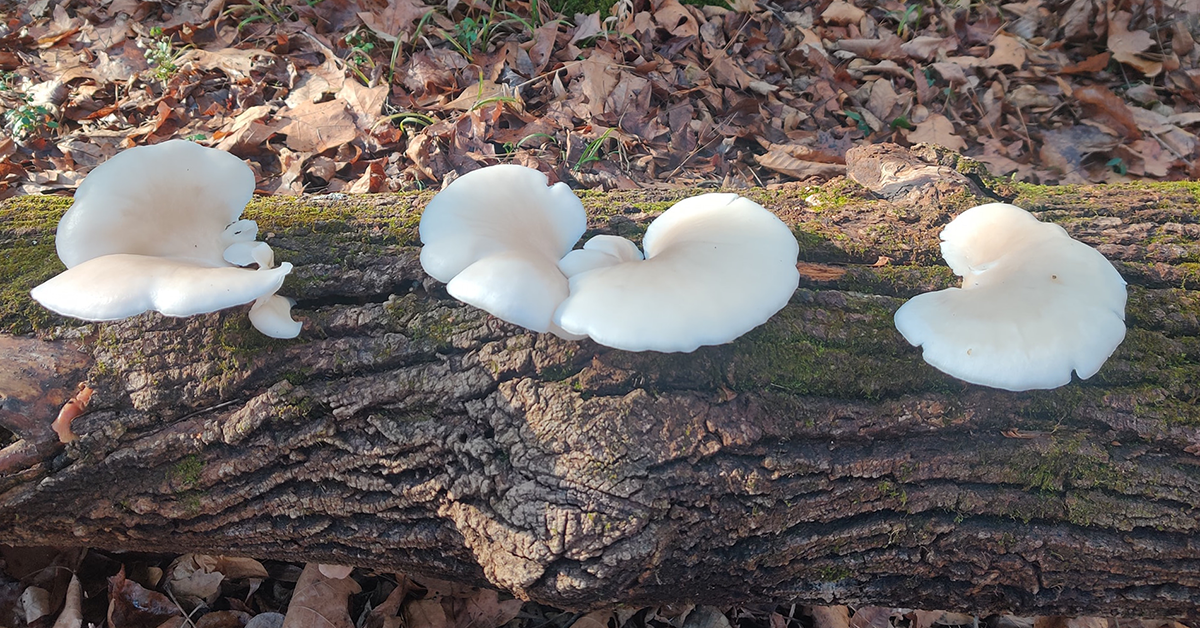 We all know Oyster Mushrooms as they are one of the most popularly cultivated gourmet edible mushrooms. This is because they are easy to grow and also quite delicious! Many times mushroom foragers don’t pick Oyster Mushrooms as they are on the hunt for more exotic prizes, but they are not worth skipping in my book! Especially during the early spring when not much else is out.
We all know Oyster Mushrooms as they are one of the most popularly cultivated gourmet edible mushrooms. This is because they are easy to grow and also quite delicious! Many times mushroom foragers don’t pick Oyster Mushrooms as they are on the hunt for more exotic prizes, but they are not worth skipping in my book! Especially during the early spring when not much else is out.
In the Appalachian mountains there are at least 5 known species of Oyster Mushrooms. Each of these is edible and delicious!
What Do Oyster Mushrooms Look Like?
Oyster Mushrooms are usually white to gray mushrooms that grow from the sides of trunks, branches, stumps, or any form of wood. Some species can also be pink, yellow, or blue. They are not your usual stem-cap mushroom but more bracket like and “ear” shaped. The stem is usually angled towards one side and has “decurrent” gills that run seamlessly into the stem.
Oyster Musrhoom Lookalikes
Angel WIngs (Pleurocybella porrigens) are a look alike to the white oyster mushrooms. These can be differentiated by the fact they grow on coniferous wood and they are much thinner and tougher than true Oyster Mushrooms.
Oyster Mushrooms In The Applachians
| Common Name | Scientific Name | Description and Habitat |
| Oyster Mushroom | (Pleurotus ostreatus) | This is the common oyster mushroom sold in stores. It is usually white in nature but can also be gray or blue. |
| Summer Oyster Mushroom | (Pleurotus pulmonarius) | Summer Oyster Mushrooms as the name entail usually grow in warmer weather but can occur in the spring. They are differentiated by normal oyster mushrooms by their pale cap color and large stems. |
| Veiled Oyster | (Pleurotus dryinus) | This mushroom is recognized by the fact it is an Oyster Mushroom but it has a partial-veil that covers the gills of the mushroom when it’s young. |
| Aspen Oyster Mushroom | (Pleurotus populinus) | This is a white oyster that grows specifically on Aspen and it’s close relatives. |
| Golden Oyster Mushroom | (Pleurotus citrinopileatus) | Golden Oysters are easily recognized by their bright yellow coloring. These usually grow in the summer but can occur in spring. This mushroom is non-native and invasive. DO NOT go spreading its spores! |
Late Spring Mushrooms (May - Mid-June)
Chanterelles (Cantharellus sp.)
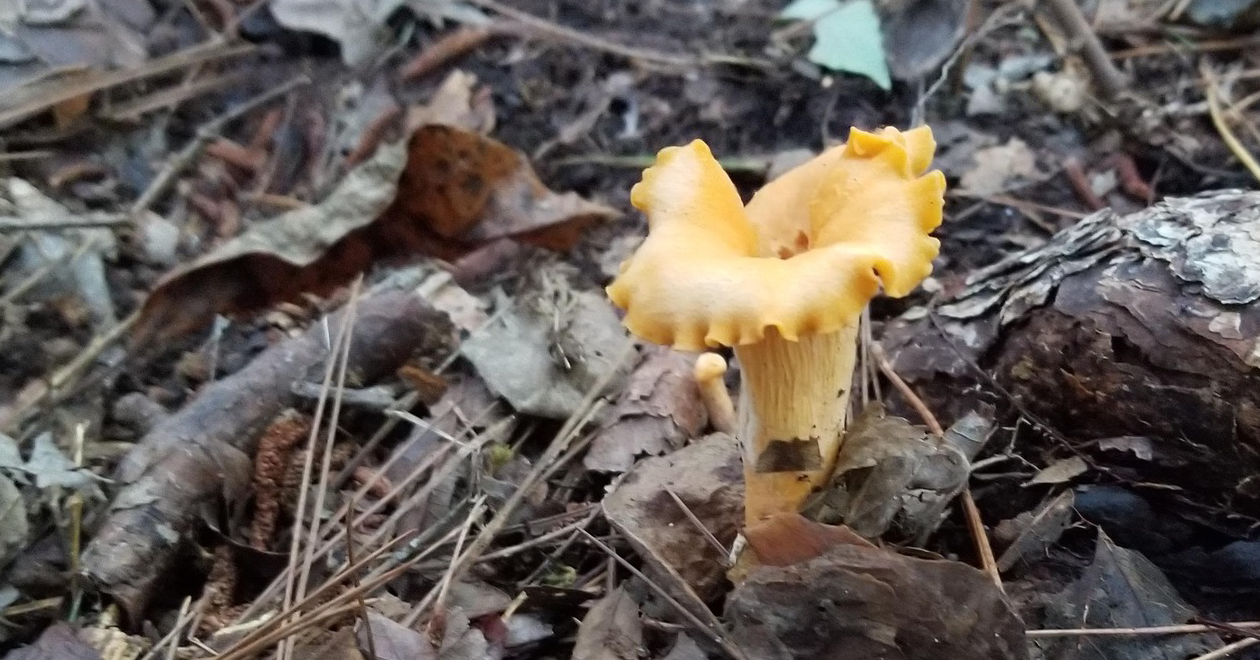
Chanterelles are one of the greatest joys for mushroom pickers. They’re delicious and abundant when the season is right.
The Appalachian Mountains has around a whopping 20 different types of Chanterelles most of which fruit during the summer and fall. Even still you can find Chanterelles in the spring but most often in late-spring overlapping with summer season. The most common spring Chanterelles are the Red Chanterelle, Small Chanterelle, and Smooth Chanterelle.
What Do Chanterelles Look Like?
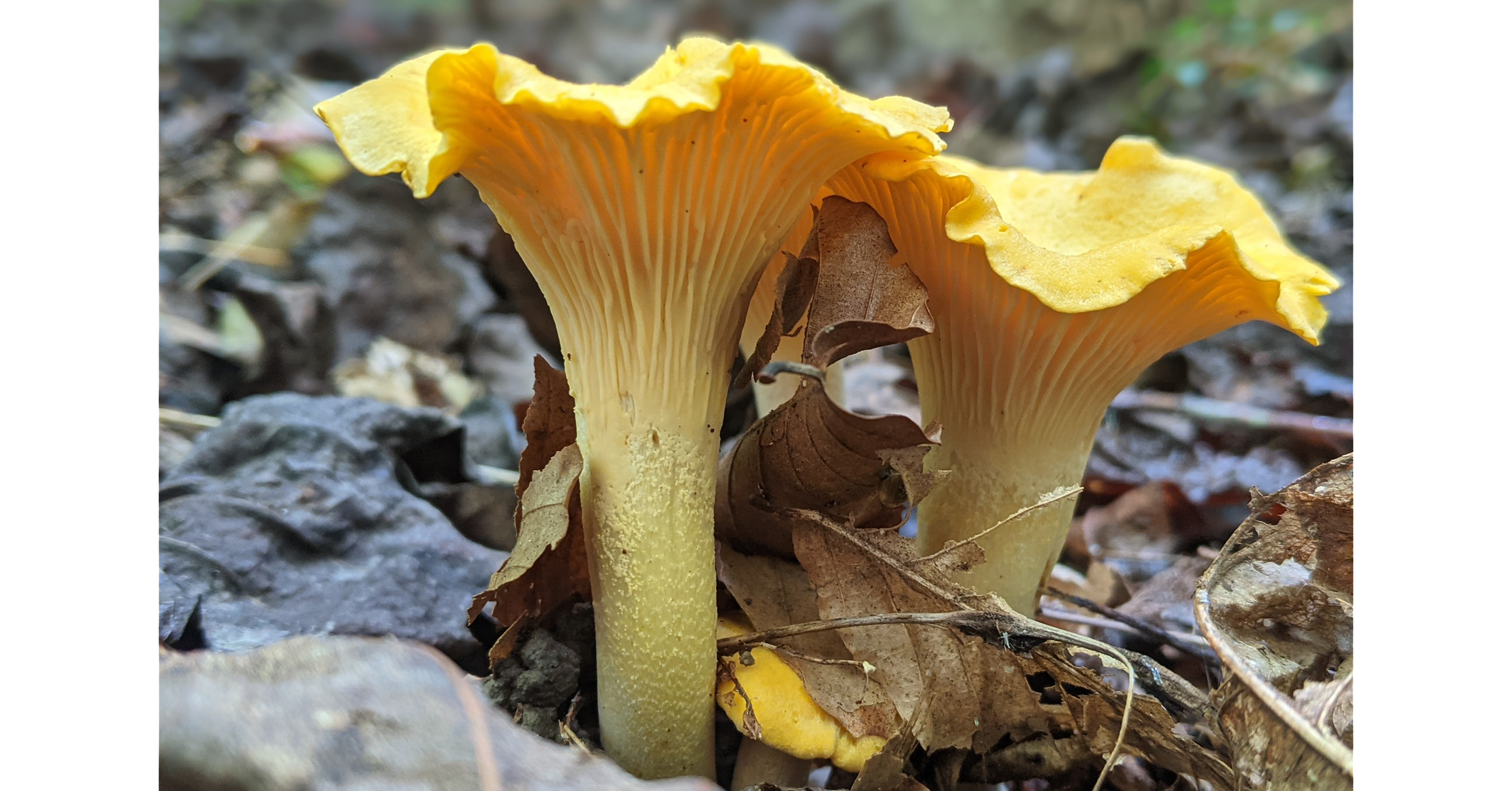 In the Appalachian Mountains chanterelles can be diverse. Most species are recognized by their “ridge-like” false gills and their apricot or fruit-like aroma. While many species are yellow, the Red Chanterelle is what you’ll most likely find in the spring.
In the Appalachian Mountains chanterelles can be diverse. Most species are recognized by their “ridge-like” false gills and their apricot or fruit-like aroma. While many species are yellow, the Red Chanterelle is what you’ll most likely find in the spring.
Chanterelle Lookalikes
Jack o’ Lantern Mushrooms (Omphalotus olearius) and Hygrophoropsis species.
Spring Chanterelles In The Applachians
| Common Name | Scientific Name | Description and Habitat |
| Red Chanterelle | Cantharellus cinnabarinus | This chanterelle is easily recognized by its red color. While it’s mostly a summer mushroom, it can be found as early as May. |
| Small Chanterelle | Cantharellus minor | This is a tiny, yellow, and kind of fragile chanterelle. Also occurs as early as May. |
| Smooth Chanterelle | Cantharellus lateritius | This is a larger Chanterelle than the latter and recognized by it’s smooth underside. Sometimes they’ll display some texture on the underside but not like the other species. |
Jackson’s Slender Caesar (Amanita jacksonii)
Feared by some and revered by others, Caesars Amanitas are a classic gourmet mushroom of the eastern United States. While the genus Amanita does have some highly toxic and potentially mortal species, it also has delicious choice edibles.
While I don’t recommend this mushroom to beginners, for experienced mushroom hunters this is a good one to add to your repertoire. Afterall, if you’ve hunted for a season or two before you’ve probably seen many of these gorgeous Amanitas including the edible Caesar amanitas.
While Amanitas are by-far a summer mushrooms they do occur in late spring. In particular what is most common is a variety of the Caesars mushroom called Jackson’s Slender Caesar or Amanita Jacksonii.
What Does Jackson’s Slender Caesar Look Like?
It’s a BEAUTIFUL mushroom. It’s bright-orange to red cap “hatches” from a white egg that is seen at the base of mature specimens. The gills and the stem have a strong yellow-orange coloring that are important in differentiating it from lookalikes. It is almost always completely smooth on the top and does not have any “warts” like other members of the genus. They usually associate with Oak.
Lookalikes: Amanita muscaria, Amanita parcivolvata,and other members in the genus. The orange/yellow gills and stem are CRUCIAL to distinguishing this from other species.
Disclaimer: Since this does have potentially toxic and mortal lookalikes, be VERY CAREFUL! Use various recources and confirm with an experienced forager before consuming this mushroom.
Eastern Black Trumpets (Craterellus fallax)
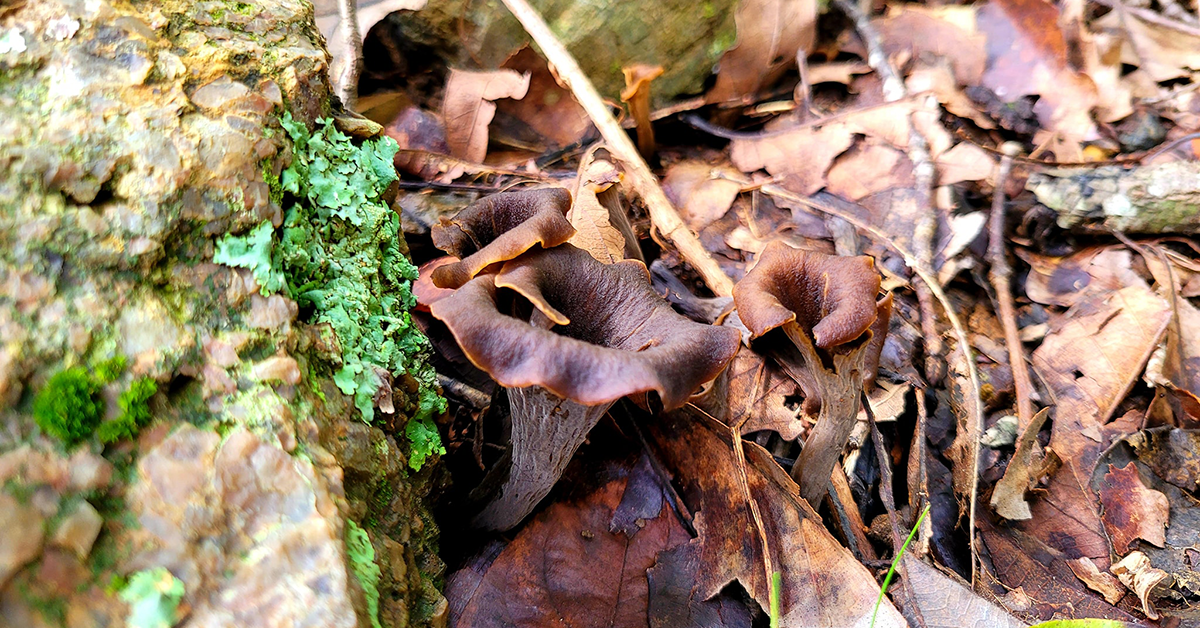
Black trumpets are delicious mushrooms easily recognized by their black tube-like form. They are often called “poor-mans truffle” due to their truffle like flavor. I love to dehydrate these mushrooms and cure them in jars for a couple months. Their flavor intensifies! Like the other late spring mushrooms this is usually found more abundantly in the summer months.
What Do Black Trumpets Look Like?
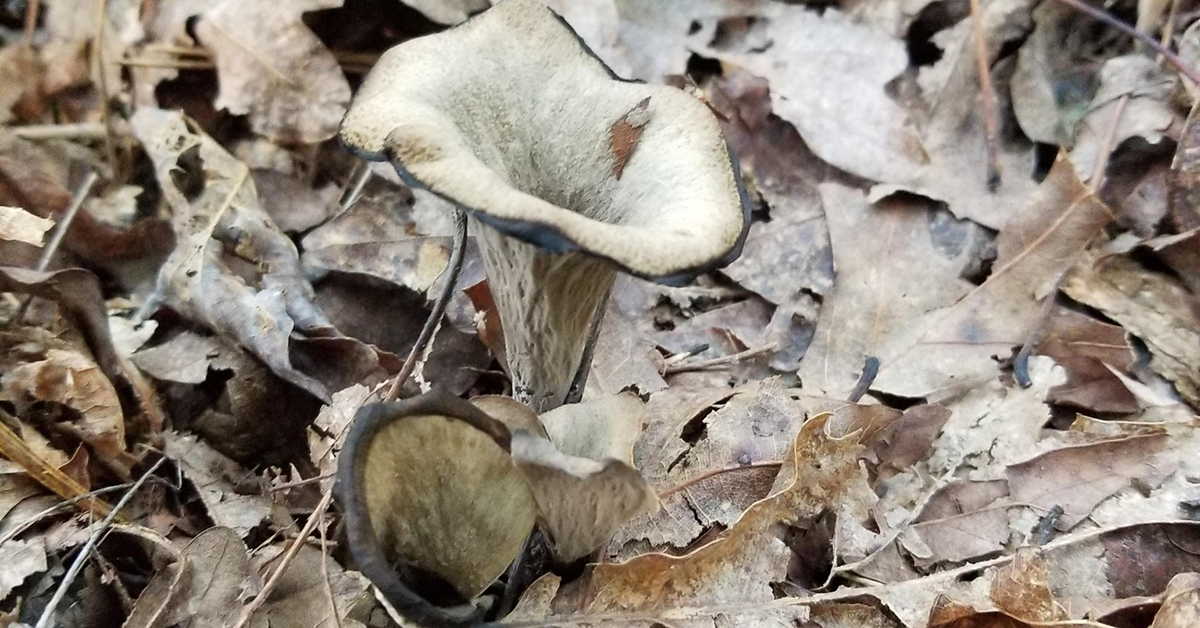
Black trumpets are easy to identify but they can be difficult to see! This is because their dark color often camouflages them into the surrounding landscape.
Black trumpets are usually gray-black trumpet shaped tubes that grow in clusters. The top and inside tissues are usually darker than the outside. The mushroom fleshy is thin and papery. Their smell is faint, but when collected in large quantities give off a fruity aroma.
Black Trumpet Mushroom Lookalikes
Black Trumpets don’t really have many lookalikes. Consult a professional if you have any doubts!
Photo Credits
Thanks for the user submitted photos from our community.
Morel by Brant Renfro
Chicken of the Woods by Anna Thorton
Oyster Mushrooms by Christine Gentile
Chanterelle by John Moorhous
Chanterelle by Karen Watts
Black Trumpet by Alexis Walker
Black Trumpet by John Moorhous
